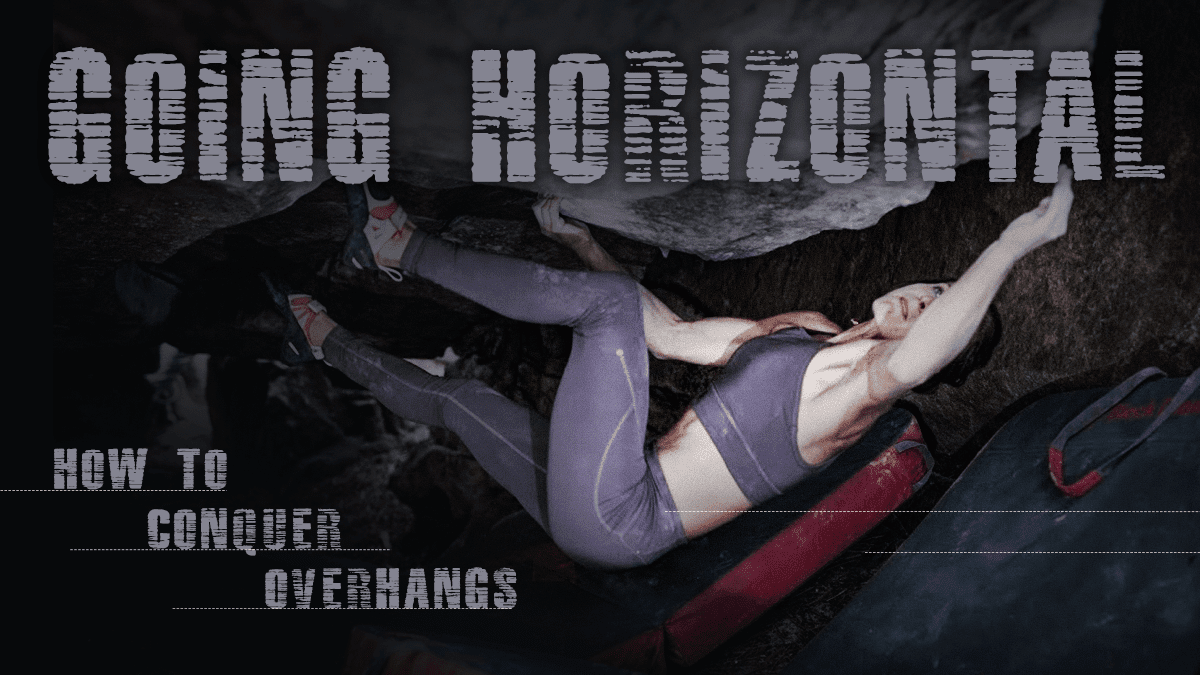Going Horizontal: How to Conquer Overhangs

Maybe one day you want to conquer the Rock ‘n Rattle — a scenic 5.11c roof route that sends you over the Wenatchee River in Washington. Or perhaps you want to try your hands at the jugs on The Eagle’s Gift, a fun 5.9+ in Maine.
These are some (of many) notable places for overhang climbing in the U.S. And once you’re out of the States, there’s a whole world that opens up, full of steep shelves, horizontal hangs, and a brand-new level of difficulty.
Overhang climbing is what it sounds like — taking your typical vertical route and making it horizontal. It means you’ll be engaging a lot more core, and relying on your feet more than your arms, as you scale roofs.
Sounds fun, doesn’t it?
It’s difficult, too — and that’s where practice and technique come in. We offer some insight into this style of climbing that should help you make that transition easier.
Strap on a harness and keep reading!
1. Train Your Core
If you know you’re about to practice overhang climbing — you’re taking a class at your local indoor gym, or planning an epic trip with fellow climbers — be sure to work out your core beforehand.
Planks are an excellent way to engage all the muscles in that region. Try holding regular planks for 30 seconds, then 1 minute, then a minute and a half. Don’t forget to practice side planks, too, hitting those obliques.
Climbing, in general, requires a lot of core. But overhang climbs even more so. You’ll need to keep that tension to truly excel.
2. Use Your Legs
This style of climbing uses legs more than any other style. It’s almost impossible to overhang climb without them. Your forearms will burn out much quicker as you scale roofs — which is where your toes and legs come in.
Practice toes hooks, heel hooks, bicycle hooks, and kneebars. These will all come in handy to keep you on the wall. The second your feet lose contact, it’s likely the rest of your body will follow.
Kneebars will allow you to take short rests when possible. Trust us — you’ll need those rests to push through.
Of course, don’t forget to “read” the route before you start climbing. You can try and pick out spots where you can make these rests happen.
3. Keep Arms Long
As you climb and make moves, your arms will naturally flex and bend. But in the interim, try and keep them as straight as possible.
Your back and shoulders carry a lot of strength — arguably more than your arms. Let them pick up the slack. Keep arms long and extended to avoid quicker burnout.
This, combined with core strength and excellent footwork, should allow you to go farther.
Overhang Climbing: Not for the Faint at Heart
But that’s not to say you can’t do it.
Climbing a roof isn’t easy — but there’s hardly a better feeling than conquering something that was once difficult. Overhang climbing is an excellent way to prove your strength, practice your technique, and get yourself in the rankings of other tough climbers like yourself.
And of course, you can’t do it without your belayer. Check out this article with your partner to ensure you’ve got the best communication possible.
See you on the rocks!




